- Our Products
- Upper Extremity
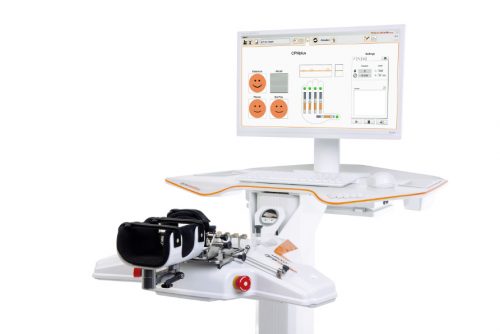 AMADEO The hand therapy world champion
AMADEO The hand therapy world champion
Boredom in finger-hand rehabilitation? Not with AMADEO! Motivation in the course of therapy is just as essential as fingers and hands are for daily life. Regardless of whether it is an adult or child, AMADEO increases therapeutic ambition with sophisticated robotics and a playful approach, and also visualizes the smallest successes in all phases of rehabilitation. Bottom line: AMADEO is simply unique.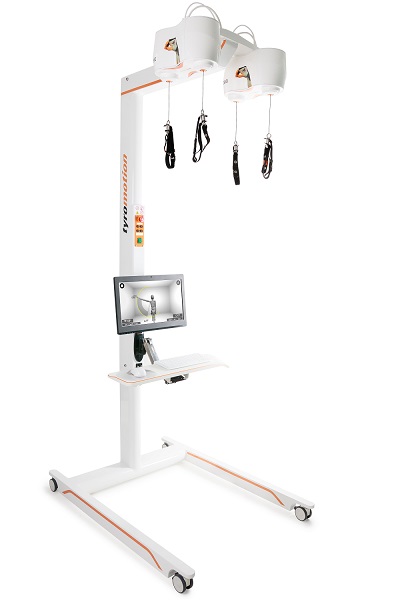 DIEGOBilaterally back to life
DIEGOBilaterally back to life
Finally go fishing again? DIEGO® skilfully assists patients with its unique intelligent weight relief. With its three-dimensional therapeutic area and virtual reality, DIEGO® enables the ideal transfer of what you have learned into everyday life – exactly with the required support. Nothing more and nothing less.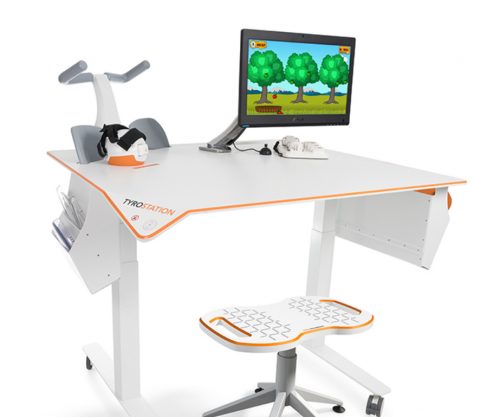 TYROSTATION Endless options, well organized
TYROSTATION Endless options, well organized
Anyone who is as versatile as PABLO® and TYMO® needs structure to really unfold. The Tyrostation is home to all individual components of our two all-rounders and also provides perfect ergonomic adaptability for every patient.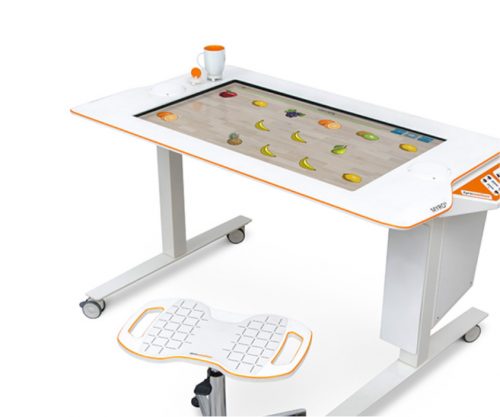 MYRO Full of variety, versatility, innovation and creativity
MYRO Full of variety, versatility, innovation and creativity
Real objects, power control, touch applications and a whole lot of fun: this is what constitutes goal-oriented, intuitive therapy with MYRO. The sensor-based surface is the basis for creative therapy which brings about meaning and self-determination in daily life.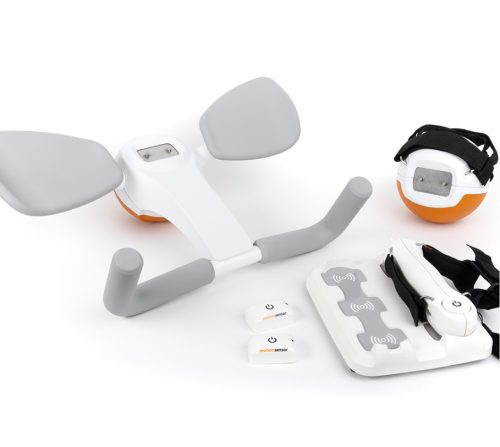 PABLO As versatile as life
PABLO As versatile as life
PABLO® is an all-rounder when it comes to activities of daily living. Position sensors and numerous accessories open up incredibly versatile therapeutic options in a safe environment for patients of all impairment levels.
- Lower Extremity
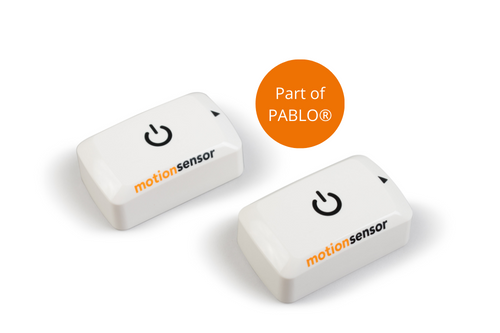 PABLO Lower ExtremityPart of PABLO®
PABLO Lower ExtremityPart of PABLO®
Always know where therapy is going
PABLO® Lower Extremity, our gait analysis and training system, precisely measures the parameters which are required for the selection of the most effective therapeutic measures for gait improvement. Simple and location-independent application as well as size-independent measurement makes the package complete – small device, great effect!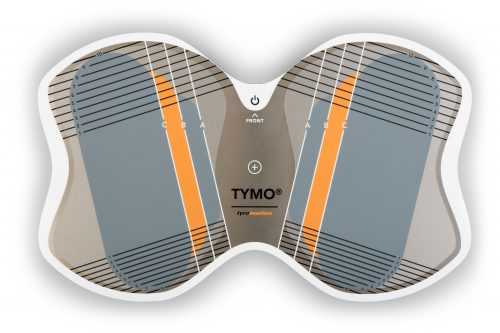 TYMO Balance in perfection
TYMO Balance in perfection
TYMO, a portable posturography system and the world’s thinnest balance platform. Flexible in application, TYMO trains postural control in a sensitive, specific and meaningful manner, and is therefore the basis of all movements. Motivation and fun are included.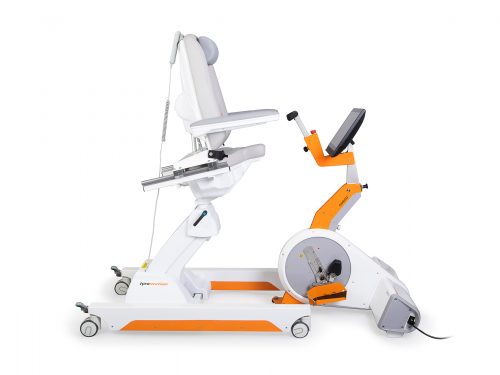 OMEGO Plus Therapy for all phases of gait rehabilitation gone motivational
OMEGO Plus Therapy for all phases of gait rehabilitation gone motivational
Two separate drives mobilize the patient in an effortless, isolated and focussed manner, and therefore make OMEGO® the long-desired stopgap between mobilization and locomotion. What else remains for patient and therapist to do? Train in a motivated manner, have fun and achieve goals.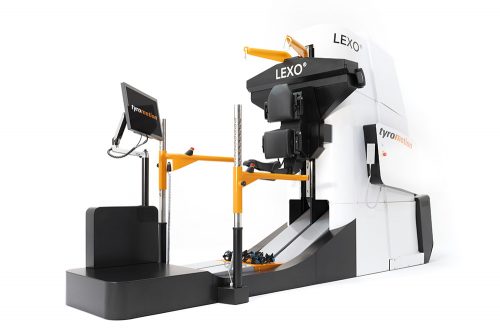 LEXOGait training at its best
LEXOGait training at its best
Maximum number of steps and intensity, low in height, easy handling and fast setup time: Impossible? It works! With LEXO® patients take the first impressive steps back to mobility and enjoy the feeling that things are finally getting better again.
- MTT-Line
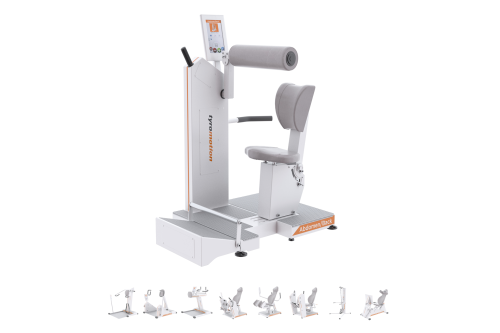 MTT-Line Medical training therapy
MTT-Line Medical training therapy
The barrier-free MTT-LINE specifically strengthens the six major muscle groups of the human body.
- Software
 TyroS The heart of our technology
TyroS The heart of our technology
Our TyroS software – developed by and together with therapists – is the heart of our technology that combines devices, know-how and therapeutic games. It is a sophisticated therapeutic system that helps challenge and encourage patients.
- Upper Extremity
Patienten Story
Patient Story: Learning to walk with Paraplegia
30. August 2021 ● 7 min Reading time
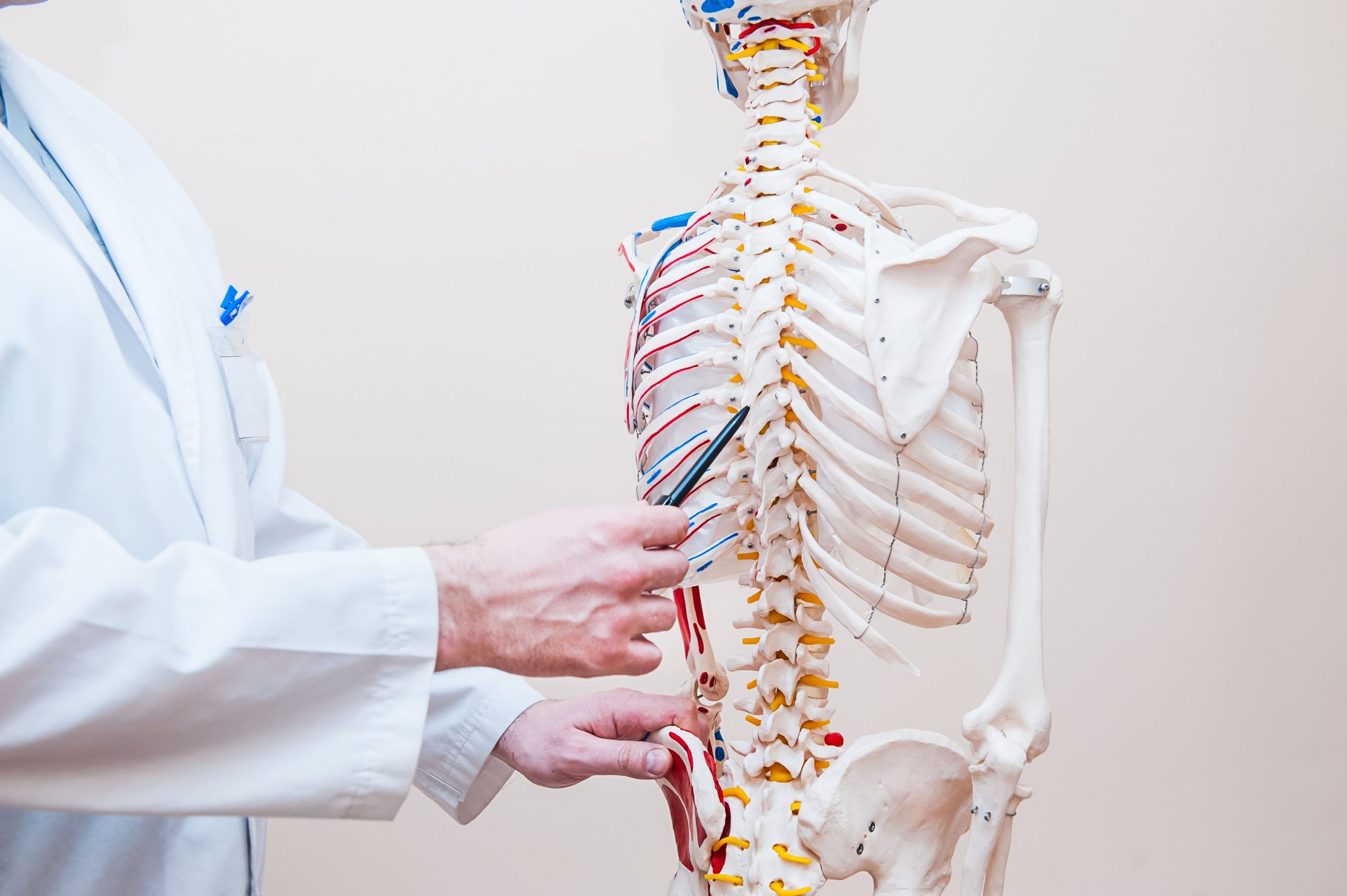
The position and extent of spinal cord injury determine the form of paraplegia
“Suddenly, I was a patient myself,” Nina says of her herniated disk, which led to incomplete paraplegia.

In the beginning, no one could tell her what the extent of her limitations would be. Around ten days after surgery on her spine, the doctors were optimistic. Initial movements in Nina’s toes indicated incomplete paraplegia, where motoric and sensory systems are only partially affected. With continued gains in leg movement, Nina had the chance to walk again. “50% of rehabilitation is decided by doctors, therapists, and equipment. The other 50% is the share I can take in my own healing process,” Nina says with confidence.
After acute rehabilitation, Nina started rehabilitation of Phase D in January 2021 at the GLG Fachklinik Wolletzsee, in the north of Berlin.
Since 2016, the GLG Fachklinik Wolletzsee has been using technology-based devices to supplement conventional rehabilitation measures. In addition to the upper extremity lab established some years ago, the walking studio with two OMEGOs and the gait trainer, LEXO, was opened in August 2020. “Previously, gait training was mainly limited to patients walking the corridors with a therapist,” explains the head occupational therapist at the clinic Katja Siebold during the opening ceremony; two to three therapists were needed to support each patient. LEXO now assists with this work; the gait robot supports the patients and allows them to work on their walking ability. Above all, LEXO allows for the increased repetitions required to see measurable results. In everyday hospital life, technology-based devices aid the therapist, by creating additional, valuable treatment time for patients.

Head therapist Katja Sieboldt, therapist Anja Müller, Brandenburg’s Minister of Health Ursula Nonnemacher and Tyromotion CSO Wolfram Veitl at the opening ceremony of the walking studio
Initially, Nina was able to walk short distances (40 meters) with the aid of a walking frame. Short breaks included.
In the clinic’s walking studio, she had the opportunity to perform intensive training using the latest technology. Nina experienced mixed feelings during her first few times in the LEXO gait trainer; “At the beginning, I really clenched and cramped, because I was afraid to tip over. It was a real experience. My head changed over relatively quickly, and I understood that I can just walk with LEXO. I didn’t have to counteract.” When she started using LEXO, Nina was able to walk very short distances and required frequent rest breaks. She participated in two therapy sessions per week.


“During therapy, I repeatedly have the feeling that I am not making any progress. It helps to see the protocols at LEXO and OMEGO. The devices don’t distort results to make their statements look better. They clearly and neutrally indicate how my strength, endurance, and coordination develop. Even small advances become visible and increase my motivation.”
Nina K.
At the end of her inpatient rehabilitation after paraplegia, Nina can walk on the LEXO for 25 minutes a session.
Nina now can walk further distances with less rest breaks during her therapy sessions. Thanks to the optional seat on LEXO, she can relax her legs completely during a rest break. She no longer needs weight relief through the straps. When leaving the rehabilitation facility, Nina can walk about 100 meters with her walking frame. She can even manage short distances without a walking frame. At home, she is already doing well walking without any aids.
We wish you all the best, dear Nina! Stay strong!
Author: Michaela Partel
You might also be interested in
4. April 2023
Health
Rehabilitation
Stroke nutrition guidelines for optimal health
Nutrition as the key part in health and well-being of stroke survivors A healthy, balanced …
21. March 2023
Rehabilitation
Kinesio taping in neurology as a useful therapy supplement
The Kinesio tape and its usefulness in neurological therapy What was originally known only from …
7. March 2023
Rehabilitation
Exercises against freezing of gait in Parkinson’s disease
When the legs freeze – how does the symptom “Freezing of Gait” manifest itself? Parkinson’s …








